TransBar Code 39

Fields of applications
TransBar Code 39 allows to create barcodes for the following fields of application :
- logistics
- referencing of fixed assets or stored for inventories
- coding of serial numbers on marketed equipment
- all internal logistics applications within a company
- logistics of automotive spare parts, according to Galia 39
- administrative
- referencing of documents: quotes, invoices, mails, etc
- administrative or postal forms, transport tickets, etc, according to the specifications imposing the medical Code 39
- medical
- coding of the CIP 7, UCD 7 or ACL 7 numbers on medicines or french pharmaceutical specialties
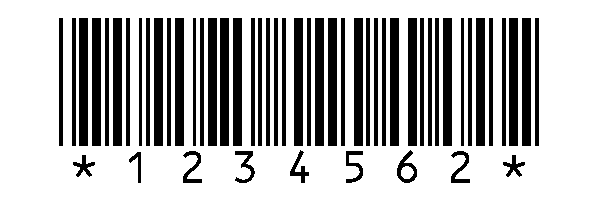
- coding of the CIP 13, UCD 13 or ACL 13 numbers on medicines or french pharmaceutical specialties
- coding of PZN7 or PZN8 on german medicines (PZN:Pharma Zentral Nummer)

- coding of informations Italian Pharmacode on italian medicines
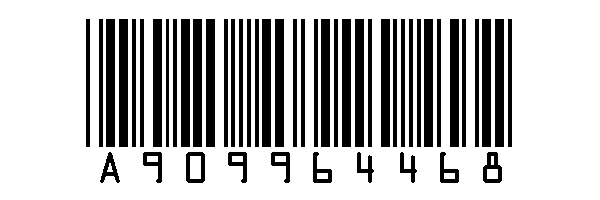

Storable characters
The Code 39 barcodes can store informations with any length, composed by :
- digits
- uppercase
- space, plus, less, divide, point, percentage, dollar signs
Different standards are based on Code 39 (CIP 7, UCD 7 or ACL 7, PZN 7 and PZN 8, Italian Pharmacode) specifying the number and type of characters and imposing specific control characters, particular legends or even data compression. TransBar Code 39 makes it possible to respect these standards without any particular knowledge or risk of error.
It is possible, with the barcodes without legends, to encode the 127 ASCII characters by standardized combination of two characters, according to the Barcode encoding Code 39 Extended Full ASCII, but this possibility creates a very important risk of confusion and error. We advise against it by suggesting to replace it by Code 128.
Supported standards
The barcodes generated by TransBar Codes 39 respond to the common standards and appellations :
- 16388 CEI/IEC/ISO
- 3/9
- 3 of 9
- 3 parmi 9
- 800 EN DIN/NF
- ACL 7
- AFFSAP
- AIAG 39
- AMM
- CIP 39
- CIP 7
- GALIA 39
- Italian Pharmacode
- ODETTE 39
- PZN 7
- PZN 8
- ACL 13
- CIP 13
- UCD 13
Graphic possibilities
TransBar Code 39 generates barcodes of seven common heights:
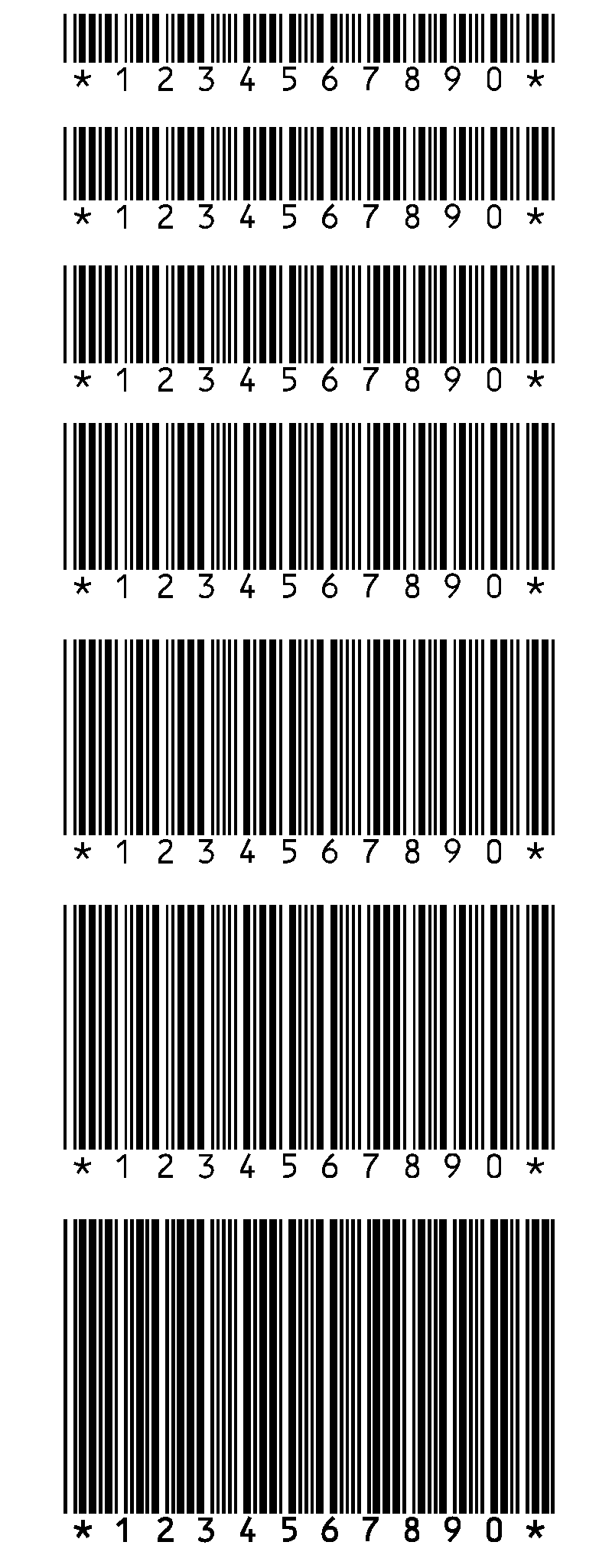

Barcodes are obtained without a caption or are automatically provided with a caption. In the latter case, we use to legend with an asterisk the characters start and stop; these characters are not part of the encoded message and TransBar also makes it possible not to make them appear :
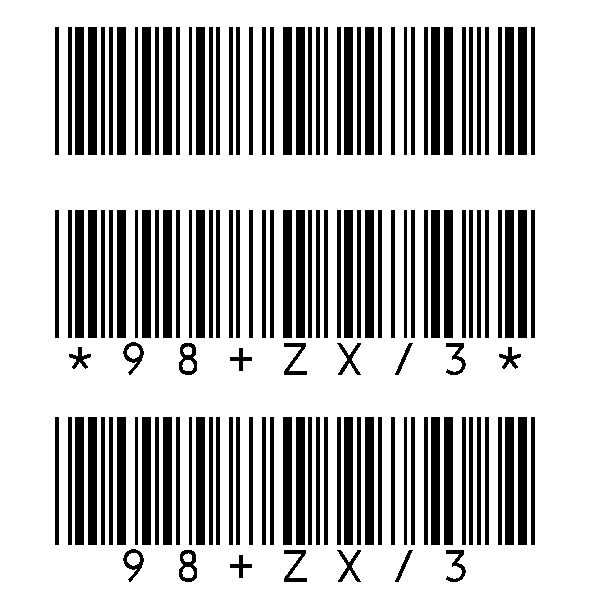
Transcription Code 39 classic
The transcription (expression of information to be coded as text to be printed by a barcode font) is particularly simple in Code 39 and makes it possible to dispense the use of TransBar when no control character is requested :
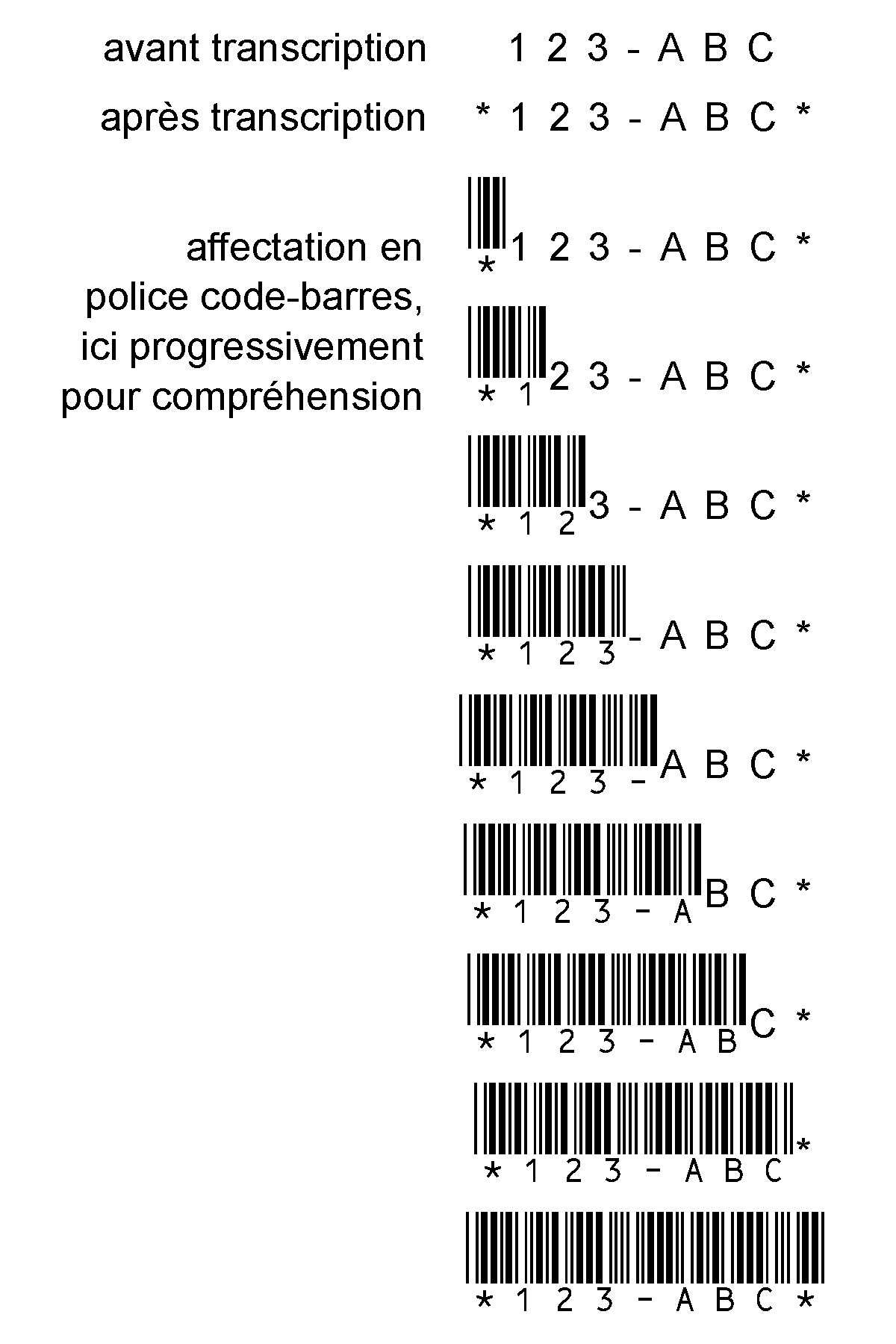
In a document template, it is possible to prepare a blank barcode composed by only two "asterisk" characters: then, when finalizing the document, just place the cursor between these two asterisks and enter the reference to code to obtain a bar code memorizing what we just write :
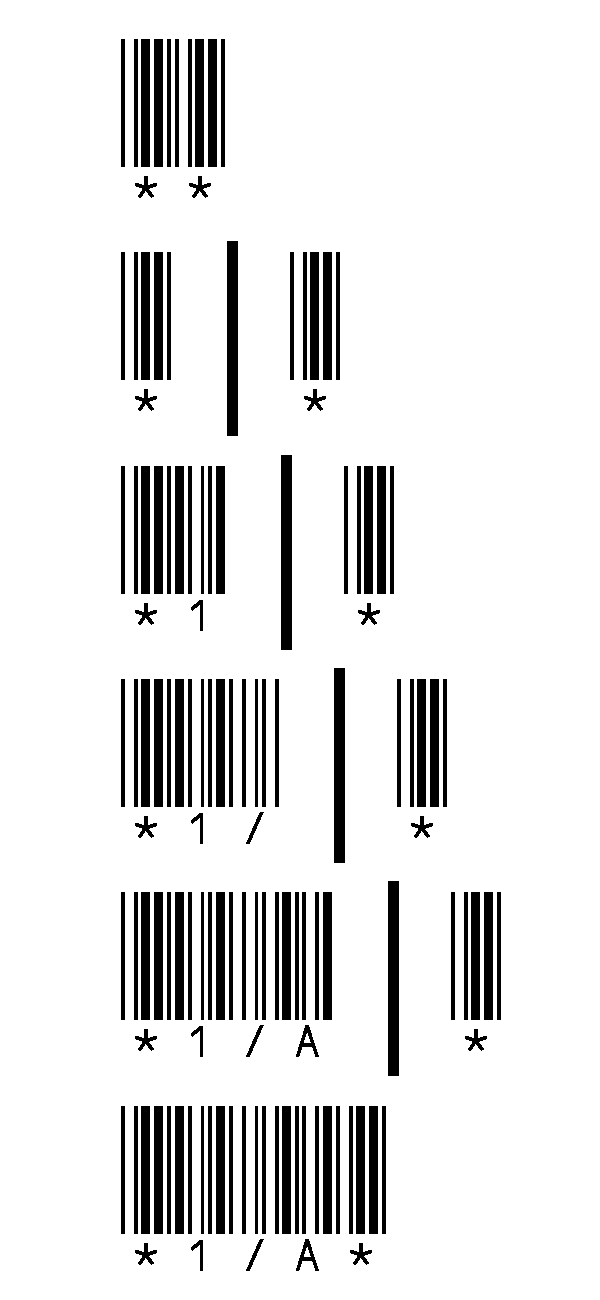
Similarly, a spreadsheet column will be easily encoded by a second column linked to the first by a formula enabling the information to be automatically framed by "asterisk" characters :
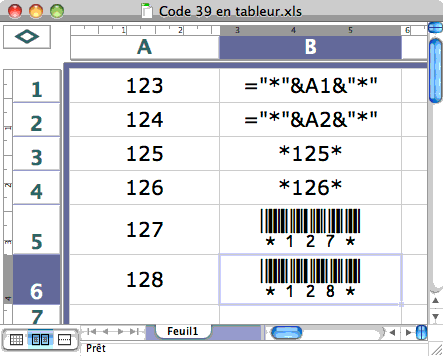
Finally, a database can print a field as a barcode by asking in the print model that this field be preceded and followed by an "asterisk" character, as it would be required to be preceded by a $ or followed by a € if it was a financial amount.
Transcription french CIP 39
It differs from the classical transcription on 3 points :
- it only accepts 6 or 7 digits
- a specific control character is automatically calculated in case of 6 digits, automatically checked in case of 7 digits
- some 6 digits are not acceptable, regardless of the seventh
Transcription german PZN 39
Transcription PZN7 and Trancription PZN 8 are different for TransBar. They are distinguished from the classical transcription on 3 points :
- they only accept 6, 7 digits or 8 digits always preceded by the sign - which TransBar adds when it’s needed
- when the number of digits is 8, or when it is seven without starting with a zero digit, the last digit is a specific control character that is automatically added or verified by TransBar
- some 6 or 7 digits are not acceptable, regardless of the number
Transcription Italian Pharmacode
The Italian Pharmacode transcription of TransBar seamlessly handles the data compression of this standard by accepting, as input :
- the decompressed information, in the form of 9 digits, with or without the letter "A" ahead
- the compressed information, which will actually be stored by the barcode, in the form of 6 digits or uppercase letters except A, E, I and O
and outputting these two values. The legend to express the decompressed information, it can not be obtained by an automatic legend of the barcode font but must be obtained by a second field, theoretically expressed by an OCR A font.
Minimum system requirements for TransBar
The most recent version of TransBar and its fonts have been tested with success on the following configurations:
- Mac
- MacOS 10.10 "Yosemite" to MacOS 26 "Tahoe", processor Intel or ARM by Rosetta emulation
- Windows
- Intel version: Windows 7 - 64 bits Service Pack 1 to Windows 11 Pro or Family - 64 bits, processor Intel or ARM by emulation
- AMD version: Windows 11 Pro or Family - 64 bits, processor ARM exclusively
with any software that supports text writing, copy and paste, text importation or CSV files, and offering the choice of the font and the font size for non-scalable printing ; a print where 72 DTP points (pica) are 25.4 mm in accordance with the current standard of DTP and professional printers.
The use of the "server" function is limited to software that can be programmed to implement it.
Any printers with a resolution of 300, 600, 900, 1200, 1800, 2400 dots per inch.
All printers of another resolution, as long as this resolution is known and in the layout software, the font size can be expressed as a fractional value (for example 42.37 points, without this input turning into 42 points), under penalty of:
- either reduce the number of possible dimensions of barcodes;
- or generate micro-defects likely to decrease the durability or, worst case, the readability of the barcodes.
Evaluation
Consult the evaluation manual step by step.
Technical documentation
Consult :